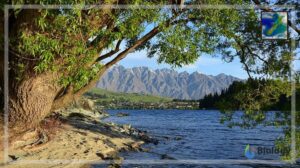Table of Contents
Biodiversity
Lead Author: J. Emmett Duffy
This article has been reviewed and approved by the following Topic Editor: John Lloyd (other articles)
Last Updated: October 30, 2007
Introduction
"the variability among living organisms from all sources including, inter alia, terrestrial, marine and other aquatic ecosystems and the ecological complexes of which they are a part; this includes diversity within species, between species, and of ecosystems."
Thus, biodiversity includes genetic variation within species, the variety of species in an area, and the variety of habitat types within a landscape. Perhaps inevitably, such an all-encompassing definition, together with the strong emotive power of the concept, has led to somewhat cavalier use of the term biodiversity, in extreme cases to refer to life or biology itself. But biodiversity properly refers to the variety of living organisms.
Biological diversity is of fundamental importance to the functioning of all natural and human-engineered ecosystems, and by extension to the ecosystem services that nature provides free of charge to human society. Living organisms play central roles in the cycles of major elements (carbon, nitrogen, and so on) and water in the environment, and diversity specifically is important in that these cycles require numerous interacting species.
General interest in biodiversity has grown rapidly in recent decades, in parallel with the growing concern about nature conservation generally, largely as a result of the accelerating rates of natural habitat loss and degradation, and resulting extinctions of species. The IUCN Red List estimates that 12-52% of species within well-studied higher taxa such as vertebrates and vascular plants are threatened with extinction. Based on data on recorded extinctions of known species over the past century, scientists estimate that current rates of species extinction are about 100 times higher than long-term average rates based on fossil data. More speculative, but also quite plausuble, estimates suggest that extinction rates now and in the near future may reach 1000 to 10,000 times the average over past geologic time. These estimates are the basis of the growing consensus that the Earth is in the midst of the sixth mass extinction event in its history.
The magnitude of biodiversity
Species can be grouped on the basis of shared characteristics into hierarchical groups, or taxa, reflecting their shared evolutionary history. At the highest level of classification (or deepest branches in the evolutionary tree of life) organisms are divided into three Domains: 1) the Bacteria, which are microorganisms lacking a cellular nucleus or other membrane-bound organelles; 2) the relatively recently discovered Archaea, microorganisms of primarily extreme environments such as hot springs, which are superficially similar to Bacteria but fundamentally different at biochemical and genetic levels; and 3) the Eukarya, which include all other organisms based on nucleated cells. The Eukarya includes the four "kingdoms", the protists, animals, plants, and fungi. Each of the eukaryotic kingdoms in turn is divided into a number of phyla. At this higher taxonomic level, the oceans are far more diverse than those on land, likely reflecting the marine origins of life on Earth. Nearly half the phyla of animals occur only in the sea (e.g., the sea stars and other echinoderms), whereas only one (the obscure Onychophora, or velvet worms) is restricted to land.
Measurement of biodiversity
Distribution of biodiversity
Species diversity varies systematically across the globe with latitude, longitude, and altitude (or its equivalent, depth, in the oceans). The trend toward higher species diversity in the tropics is perhaps the most conspicuous biogeographic pattern in nature, and is sufficiently general to have been considered a "rule". In most marine groups, diversity is maximal in the Indo-West Pacific.
Superimposed on these large-scale global patterns are local hot spots of diversity generated by geographical features, by quirks of geologic history, or by mixing of biotas from different biogeographic provinces. These biodiversity hot spots have become important (and often controversial) foci for conservation efforts.
Ecological controls on biodiversity
A central question in explaining these patterns of diversity is determining the relative importance of long-term evolutionary processes — the balance between origin and extinction of species — and local ecological processes of species interactions.
The general similarity among diversity patterns of different taxa with latitude and region suggests that these patterns are controlled primarily by factors operating over large spatial and temporal scales. Ultimately, the number of species in a region is set by a balance between origin through speciation, loss through extinction, and migration of species among regions, all of which operate over long (geologic) time scales.
Conversely, on local spatial scales and over ecological time scales on the order of a few generations of organisms, a wealth of evidence shows that diversity often varies systematically with habitat area, habitat heterogeneity, disturbance, and availability of energy (i.e., productivity) and other resources, notably water in terrestrial ecosystems.
Further reading
- Bryant, Peter J. 2004. Biodiversity and conservaton.
- Gaston, K.J. and J.I. Spicer. 2004. Biodiversity. An introduction. 2nd Edition. Blackwell.
- Groombridge, B. and M.D. Jenkins. 2002. World atlas of biodiversity. Earth’s living resources in the 21st century. University of California Press, Berkeley.
- Hawkins, B.A., Field, R., Cornell, H.V., Currie, D.J., Guegan, J.-F., Kaufman, D.M., Kerr, J.T., Mittelbach, G.G., Oberdorff, T., O’Brien, E.M., Porter, E.E., Turner, JR.G. 2003. Energy, water, and broad-scale geographic patterns of species richness. Ecology 84:3105-3117.
- Mittelbach, G.G., Steiner, C.F., Scheiner, S.M., Gross, K.L., Reynolds, H.L., Waide, R.B., Willig, M.R., Dodson, S.I., Gough, L. 2001. What is the observed relationship between species richness and productivity? Ecology 82:2381-2396.
- Purvis, A, and A. Hector. 2000. Getting the measure of biodiversity. Nature 405:212-219.
- Sala, O.E. et al. 2000. Global Biodiversity Scenarios for the Year 2100. Science 287:1770-1774.
- Sponsel, Leslie E. Environment in Focus: Sacred places and biodiversity conservation. Feature includes a timeline, FAQs, supplemental reading, websites, and news stories related to sacred places and biodiversity conservation.
- UNEP. 2006. Millennium Ecosystem Assessment: Ecosystems and Human-Well Being: Biodiversity Synthesis.
- Wilson, E.O. (editor). 1988. Biodiversity, National Academy Press, Washington, DC.







